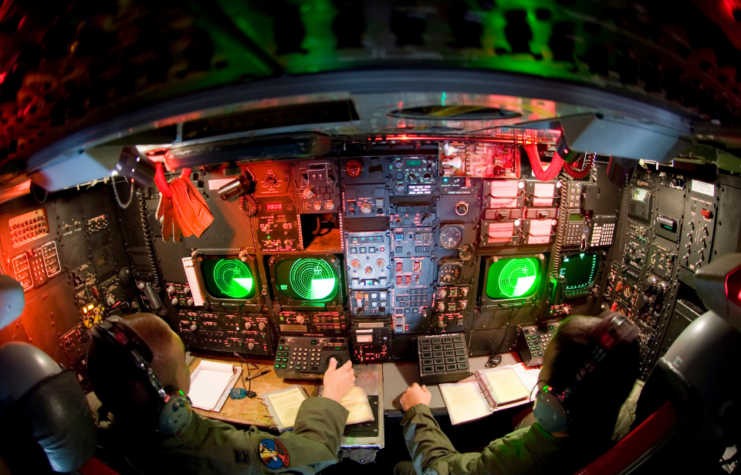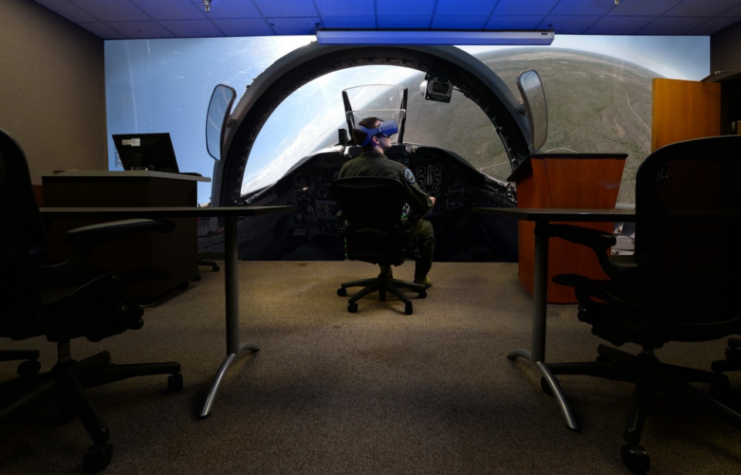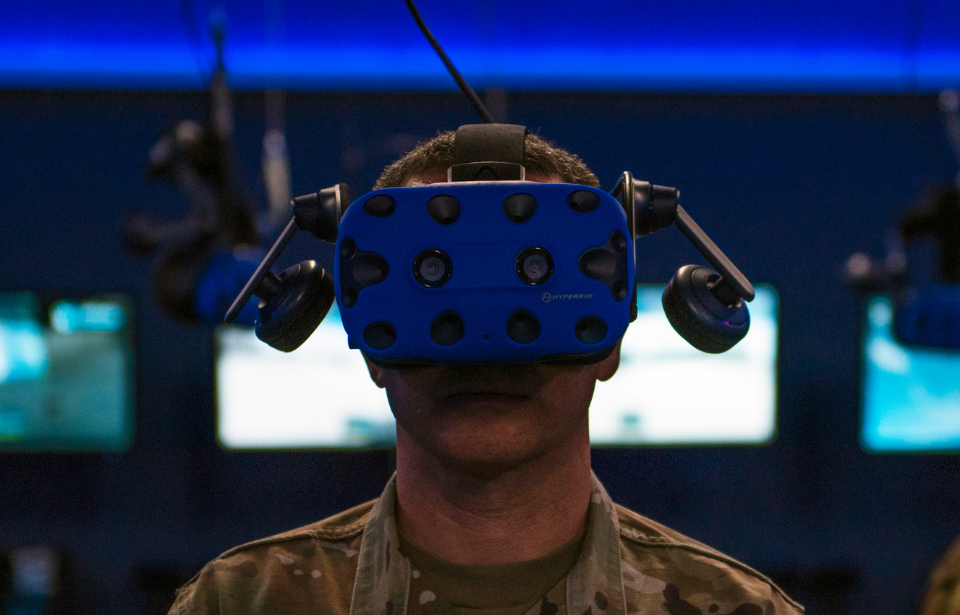A small video game studio has been selected to produce a virtual reality (VR) simulator for the U.S. Air Force’s B-52 bomber pilots. The company, King Crow Studios, has been tasked with realistically recreating the B-52 in VR, so new pilots can train in this type of aircraft without the high costs involved with flying the real thing, like fuel and maintenance. This will allow the Air Force to train pilots at a fraction of the cost, and not take valuable aircraft out of service for training.
King Crow Studios sent a member of their team, Daniel Norman, to replicate the cockpit of this enormous aircraft. “I sat in that cramped cockpit, overwhelmed by the complexity of this 60-year-old plane and all its functions,” Norman said. “Now, I know all those buttons and gauges backwards and forwards.”
King Crow Studios
The development company was started in 2015 by Cody Louviere, and originally made video games that were free of the heavy-handed influence of publishers. King Crow Studios has developed Hive Slayer, a first-person shooter in virtual reality, and Galactic Chef, a space-based cooking game, also in virtual reality. It was this virtual cooking game that caught the eye of the U.S. military.

They implemented a system that informs the player whether they have successfully or unsuccessfully completed a task in the game. If the player is stuck, the required object will glow, highlighting the next step to the player. It was this feedback system that appealed to the military.
“We included all of these user experience features to produce a good, quality video game,” Louviere said. “We didn’t know we were building the backbone of a military training program.”
The Air Force is keen to bring VR into the forefront of training, as it actually helps improve a new learner’s retention of information. Louviere said: “People retain upwards of 70% of the information presented in VR training as opposed to 50% retention in classroom settings.”
Several companies alongside King Crow Studios offered their ideas to the Air Force. Some of these, including King Crow Studios, received stage 1 funding from Small Business Innovation Research (SBIR). SBIR is a program that funds and nurtures upcoming small businesses to help them to expand into government and commercial industries.
The studio received $50,000 in stage 1 funding from SBIR in August 2019, and a further $1 million in stage 2 in January 2020 to allow them to produce a working prototype. They have since entered stage 3, where they were given $6.5 million. They are the only company to reach this stage.
Working with the Air Force
Despite the daunting prospect of working will the military, Louviere explained that it’s not as scary as it appears. “People expect working with the military to be difficult, but the Air Force knows what they want,” he said. “They’re organized, supportive, understanding and so easy to communicate with.”

In many ways, this is much easier than working with conventional video game publishers, who constantly move the goalposts depending on customer demand, reactions, and to reduce costs.
The studio’s producer, Sarah Kent, has weekly meetings with Air Force personnel who provide feedback on the project. “This is a life-or-death kind of thing,” Kent said. “So when a trainee reports that a button or a knob doesn’t work in the training like it does in the real plane, we can fix that problem with a quick turnaround.”
The developers have even implemented memes and Easter eggs from Air Force culture into the program. When members of the studio are on an Air Force base, they will often take note of the memes, jokes, and general Air Force banter they see and hear. This is then worked into the program. For example, when a servicemember makes a mistake, they will often put the blame on Mike Brogan, a fictitious person.
The studio put the name Mike Brogan on the virtual nametag.
This light-hearted fun may seem like it could detract from the goal of the program, but Louviere said it actually helps trainees: “We keep everything as serious as it needs to be, but we’ve seen that these Easter eggs make trainees more engaged by truly immersing them in the experience.”
More from us: New Material Could Power Future Cyborg Soldiers
The Air Force has already reported fewer mistakes from users of the program, and Louviere believes it will help the branch in more ways than one: “More experienced vets are wary about this kind of tech until they put the headset on. Younger soldiers want to get in the training and explore, and that kind of cross-generational appeal means good things for military recruiters.”
